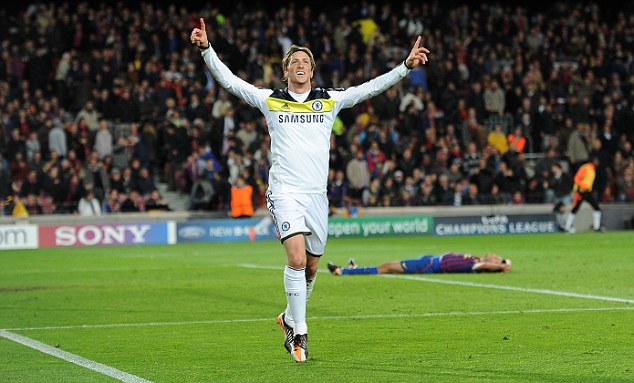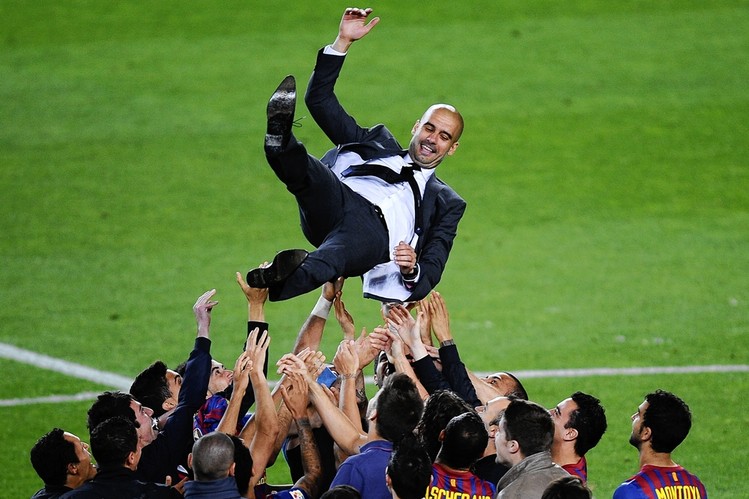After appointing Head Coach Pep Guardiola in 2008, FC Barcelona adopted what is now their well known Tiki-Taka style. A Style that elevated the Catalan Giants to a level of success never before seen in football. In only 4 seasons, they conquered 14 out of the 19 competitions they participated in. FC Barcelona consistently steamrolled the opposition and blowouts were the norm. The team often seemed unstoppable with results that surpassed the 5 goal mark. Yet, despite their incredible form, a handful of teams manage to defeat FC Barcelona. So, how did they do it? What tactics did they use to stop the attacking prowess of the likes of Messi, David Villa, Pedro, and Alexis Sanchez? How did they block the crative masterminds of Iniesta and Xavi in the midfield? How did they manage to beat the defensive wall of Pique and Mascherano on the back?
Let’s take a look at some of the tactics used by the teams that managed to stop what is arguably one of the best teams the beautiful game has ever seen.
Ultra Defensive Tactics- “Parking the Bus”
FC Barcelona vs Inter Milan, UEFA Champions League Semi-Final 2010
After having won all 6 competitions in 2009, FC Barcelona was defending their UEFA Champions League crown against Inter Milan in the semi-finals, who were under the command of Portuguese Head Coach Jose Mourinho. Mourinho would be the first to exploit the weaknesses in Barcelona’s style and he would later expose them even further with his Real Madrid side in 2011.
On April 20th, 2010. FC Barcelona suffered a 3-1 away defeat against Inter Milan. It was the first significant defeat of the season and it proved an insurmountable score when in the return game FC Barcelona was knocked off the competition despite a 1-0 victory over Inter Milan at home with a 3-2 aggregate score.
Jose Mourinho deployed a 4-3-1-2, his default formation during the 2009/2010 campaign. This particular formation would have 3 defensive midfielder sitting in front of the defenders and rely mostly on the counterattack spearheaded by Diego Milito, followed by Samuel Eto’o and Wesley Sneijder. The key to this formation was the 3 defensive midfielder who neutralized the creative midfielders in Barcelona. Likewise, Eto’o and Sneijder would open to the wings to aid in the defensive efforts by blocking Barcelona’s Fullbacks in the attack. Inter Milan exposed that FC Barcelona, while maintaining possession, would often maintain a high defensive line which could be exploited with quick and decisive counterattacks due to the lack of pace in Barcelona’s defense.
FC Barcelona vs Chelsea FC, UEFA Champions League Semi-Final 2012
Another significant defeat came in at the hands of Chelsea, once again as defending champions in the semi-finals of the UEFA Champions League in 2012. Under newly appointed interim Coach Roberto Di Matteo, Chelsea had managed to beat FC Barcelona in the first leg of the series at home 1-0. Having the home goal advantage, Chelsea was determined to shutdown Barcelona at the Camp Nou in Barcelona.
After having Scored the 1st goal and having Chelsea’s John Terry sent off for a horrendous knee on Barcelona’s Alexis Sanchez, Barcelona quickly took advantage of the numerical superiority and scored a 2nd goal to get the clear lead on aggregate. However, Chelsea would immediately recover through Ramirez who chipped Barcelona’s goalkeeper Valdez in injury time right before halftime. It was all Chelsea needed. They could now close every avenue of attack and that’s precisely what they did. In the second half they shifted to a 6-3 formation, effectively “Parking the bus” or placing 9 defenders and shutting down Barcelona’s attack from every angle. FC Barcelona was unable to crack Chelsea’s “Bus” and Chelsea punished them once more in the dying moments of the game when, Spanish international and Chelsea’s 50 million investment, Fernando Torres took advantage of the defensive high line outpacing Sergio Busquets and beating a hopeless Valdez for a final 2-2, 3-2 in aggregate, and ending FC Barcelona’s European hopes.
High Pressure Tactics- “Mourinho Once Again”
FC Barcelona vs Real Madrid CF, Copa del Rey Final 2011
Having been in a trophy drought, caused mainly by archrivals FC Barcelona’s incredible form, Real Madrid would finally win silverware by beating none other than their bitter Catalan foes in dramatic fashion 1-0 in overtime at the Copa del Rey Final. Jose Mourinho implemented an extremely fast pace, high pressure, system which required high levels of stamina which only an elite club like Real Madrid could effectively execute.
Jose Murinho’s Real Madrid fielded his 2010/2011 4-2-3-1 default formation which was design to press high on the opponent. Starting with their main man, Cristiano Ronaldo, the goal was to pressure Barcelona high in their own half to force them into passing the ball while the next 4 Madrid players applied pressure on the Barcelona man receiving the pass. Madrid aimed to never let FC Barcelona get comfortable in the midfield where they were prone to produce their most dangerous opportunities through Xavi and Iniesta. And it was precisely this pressure that led to Xavi and Messi losing the ball between 4 Real Madrid players in the center of the field which immediately transitioned into the attack to cross the ball to Cristiano Ronaldo who rose above left back Adriano and placed his header into the net.
FC Barcelona vs FC Bayern Munich, UEFA Champions League Semi-Final 2013
Lastly, after Jose Mourinho had exposed Barcelona’s weaknesses, other clubs began to counteract Barcelona’s system. And the best example, and arguably what made Guardiola’s Tiki Taka a thing of the past, was the 4-0 home trashing perpetuated by German side FC Bayern Munich in the 2012-2013 Champions League semi-final and followed by yet another 3-0 trashing in the away leg at the Allianz Arena in Munich.
Bayern Munich, under the leadership of Jupp Heynckes, started with a traditional 4-4-2. The key to their victories was their ability to exploit the already exposed weaknesses Barcelona had. Bayern Munich had a solid performance in their backline and their wingers were successful in tracking Barcelona’s fullbacks the entire time. In the middle, 4 players would pressure Messi every single time and Javi Martinez man-marking Andres Iniesta rendering them ineffective in the first game. And their counterattack was magnificent down the wings with Frank Ribery and Arjen Roben proving the difference makers in the games.
If you would like to learn more about all things football related, subscribe and stay tune for the next blog post.


